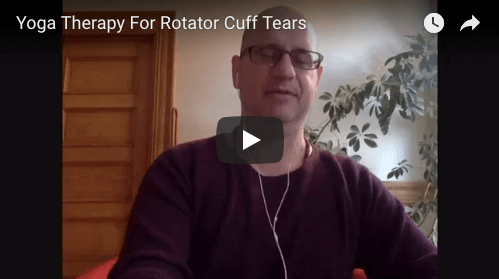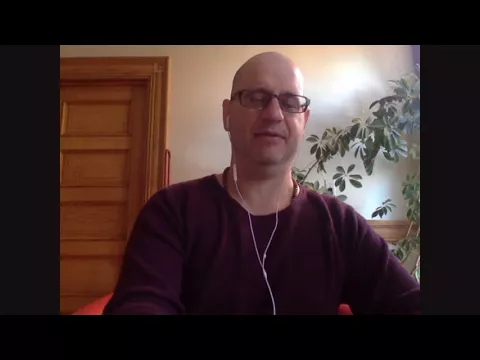When working with yoga therapy clients, knowing what NOT to do is just as important as taking the right treatment approach. In this segment, Brandt shares advice from his yoga therapy practice about working with plantar fasciitis, and stresses how to avoid aggravating this common and painful issue.
Transcription
There’s a couple things you want to look at with plantar fasciitis. One would be, you know the condition itself is like a shortened fascial state like on the foot but usually it includes the calf and up the hamstrings. So at some point you’re gonna have to stretch that. So it’s not difficult to figure out how to do that if you’re a yoga teacher, but what’s not as obvious maybe is if you look behind someone if they’re supinating or pronating that would need to be corrected too. So you’d have to look at, or my advice would be to look at them standing from behind and see if you can get those Achilles tendons to line up straight, if they’re not, you lift their toes and have them form arches and possibly you figure out how to get their feet back into neutral so that would be one thing. And then when they’re not symptomatic or really warmed up, you’d want to very gently lengthen the fascia on their feet, and their calves, and possibly their hamstrings.
But here’s the thing. What I see a lot of people do it, and I’ve even seen PTs do this, you can’t just take somebody who has plantar fasciitis, which is basically the tearing of the fascia away from the heel. And then start stretching the heck out of it because we’re just gonna make it worse because I think it’s gonna tear more. So the trick to it is, along with the sort of structural piece is to teach the person how to get very warm before they do any stretching. And then do some fairly long holds. And at first, I would target the calf area and see if you can get the calf to lengthen without feeling it in the bottom of the foot and then see if you get the hamstrings to lengthen without feeling it at the bottom of the foot. And then the final thing I do would be to do a more sort of extreme stretch where you would lift the foot off the ground, balls of the feet off the ground at some point, but that’s after they’re better. So the mistake I see people making is kind of going for these big stretches, you know, and you see this a lot in athletes so they’re very game to do things usually. So, you know, you get someone in to your practice then athlete and they’re like, yeah, I’ll just stretch it out, tell me how to stretch. But you’re likely gonna do a lot more damage, so, what I’ve seen is people have plantar fasciitis and get it made much worse by the stretches.
So the key is where the person feels it. So you really want to be targeting, usually it’s not the fascia on the foot that shortens actually, could be but usually the real problem is up the posterior chain fascially, so really going to be sort of long, gentle stretches in the calf and the hamstring. I’ve worked with that condition hundreds of times, it’s very common and that usually works. And as you give the person what to do, you know, make sure they’re warm. So actually the first thing in the morning probably isn’t your moment, so make sure they’re already warmed up and then you can go further by actually having them heat the area. And I know a lot of times if you have inflammation people think ice because it cools it, but really what you want is all the tissues to be warm and open before you do any kind of manual stuff with them.
Yoga therapy can be helpful for several types of physical problems in other parts of the body, from shoulder pain due to a tear to neck pain caused by wrong posture. A yoga therapist can help you navigate different health conditions and apply toe yoga physical therapy exercises or other yoga practices.




